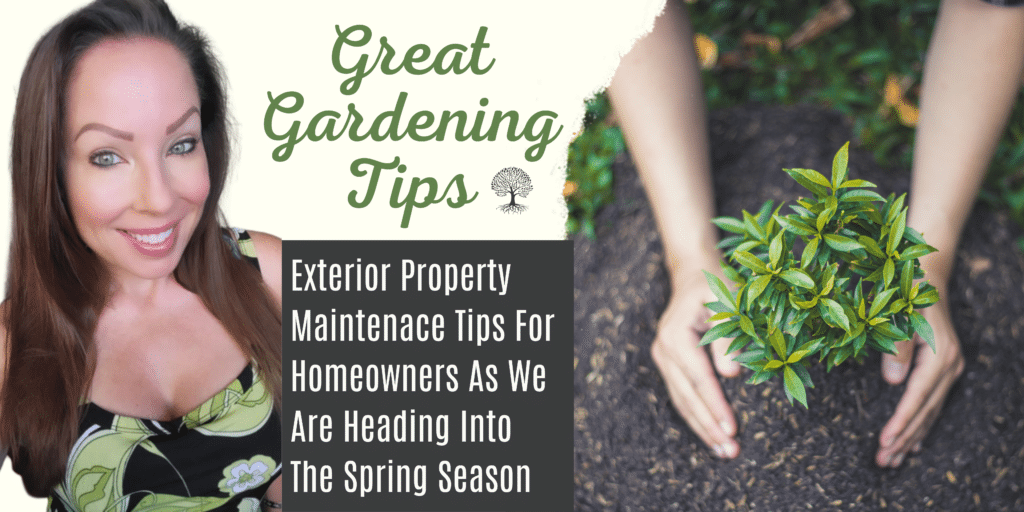
Great Gardening Tips For Homeowners Who Love To Get Their Hands Dirty
Gardening tips for homeowners is a memorable past time for plenty of property owners. And with this said, gardening is not just a pastime; it’s an art form, a science, and a pathway to enhancing your home’s curb appeal and your own well-being.
Whether you’re a seasoned green thumb or a novice eager to cultivate your first patch of earth, the following gardening tips are designed to help you create a flourishing and rewarding garden. Let’s dig into some top gardening tips that homeowners will find both interesting and engaging.
1. Know Your Zone
Understanding your hardiness zone is gardening 101. It’s the ABC of planting, guiding you on what and when to plant. Canada’s plant hardiness zones offer a guide for selecting plants that can thrive in your local climate conditions. Tailor your plant selection to your zone, and you’ll have taken the first step towards a thriving garden.
2. Soil is the Soul
The secret to a vibrant garden lies beneath the surface. Soil health is paramount. Begin with a soil test—kits are readily available at garden centers or through local extension services. This will reveal your soil’s pH and nutrient levels, allowing you to amend it accordingly. Composting is a gardener’s gold, enriching the soil with essential nutrients, improving drainage, and encouraging beneficial microorganisms.
3. Water Wisely
Water is life, but too much or too little can spell disaster for your plants. Early morning watering is best, allowing moisture to reach the roots before the sun can evaporate it. Consider drip irrigation or soaker hoses for efficient watering that minimizes waste and reduces foliage dampness, which can lead to disease.
4. Mulch Matters
Mulch isn’t just a garden’s winter coat; it’s a year-round essential. It conserves moisture, suppresses weeds, and regulates soil temperature. Organic mulches like straw, bark, or shredded leaves also add nutrients back into the soil as they decompose. A layer of 2-3 inches is sufficient to reap these benefits without suffocating your plants.
5. Embrace Companion Planting
Companion planting is like matchmaking for your garden. Certain plant combinations can boost growth, improve pollination, and even deter pests naturally. For example, planting marigolds among your vegetables can fend off nematodes, while basil alongside tomatoes enhances flavor and repels flies and mosquitoes.
6. Go Native
Incorporating native plants into your garden is a game-changer. They’re adapted to your local climate and soil, requiring less water, fewer fertilizers, and minimal effort once established. Plus, they offer vital support to local wildlife, providing food and habitat for birds, bees, and butterflies.
7. Pruning with Purpose
Pruning isn’t just about aesthetics; it’s a vital health check for your plants. Removing dead or diseased branches improves air circulation and redirects energy to healthy growth. However, timing is everything—prune flowering shrubs after they bloom to avoid cutting off next year’s blossoms, and trim perennial foliage in the fall for a tidy winter garden.
8. Pest Patrol
Gardening is a gentle battle with nature, and pests are part of the equation. Avoid chemical warfare in favor of integrated pest management (IPM). Start with physical controls like barriers and traps. If pests persist, biological controls, such as introducing beneficial insects like ladybugs, can help. As a last resort, opt for organic or low-toxicity pesticides, applying them responsibly to minimize impact on non-target species.
9. Sustainable Practices
Sustainability is more than a buzzword; it’s a guiding principle for modern gardening. Collect rainwater for irrigation, choose peat-free potting mixes to protect wetland habitats, and select pollinator-friendly plants to support biodiversity. Your garden can be a small but significant force for environmental stewardship.
10. Cultivate Patience and Curiousity
Gardening is a journey, not a race. It teaches patience, resilience, and the joy of learning. Experiment with different plants and techniques. Some will thrive, others may falter, but each season brings new lessons and opportunities for growth.
11. Connect with a Community
Gardening is a shared language among enthusiasts. Connect with local gardening groups, participate in forums, or join social media communities. Sharing experiences, swapping seeds, and celebrating successes (and commiserating over failures) can enrich your gardening journey.
Gardening is a deeply rewarding endeavor that can transform your home and enrich your life. It invites you to engage with the natural world, fosters a sense of accomplishment, and even contributes to a healthier planet. Whether you’re nurturing a balcony container garden or cultivating an expansive backyard oasis, these tips offer a foundation for success. Happy gardening, and may your green spaces grow with joy and abundance!
If you enjoyed this article, you may also want to check out this one on backyard makeovers and this one on curb appeal landscaping.
Thinking about moving to east GTA to Durham Region? Let’s chat! I can be reached at 647.896.6584, by email at info@serenaholmesrealtor.com or by filling out this simple contact form.
For plenty of other great tips, make sure we’re connected on social @serenaholmesrealtor and you’ve subscribed to my YouTube Channel.










